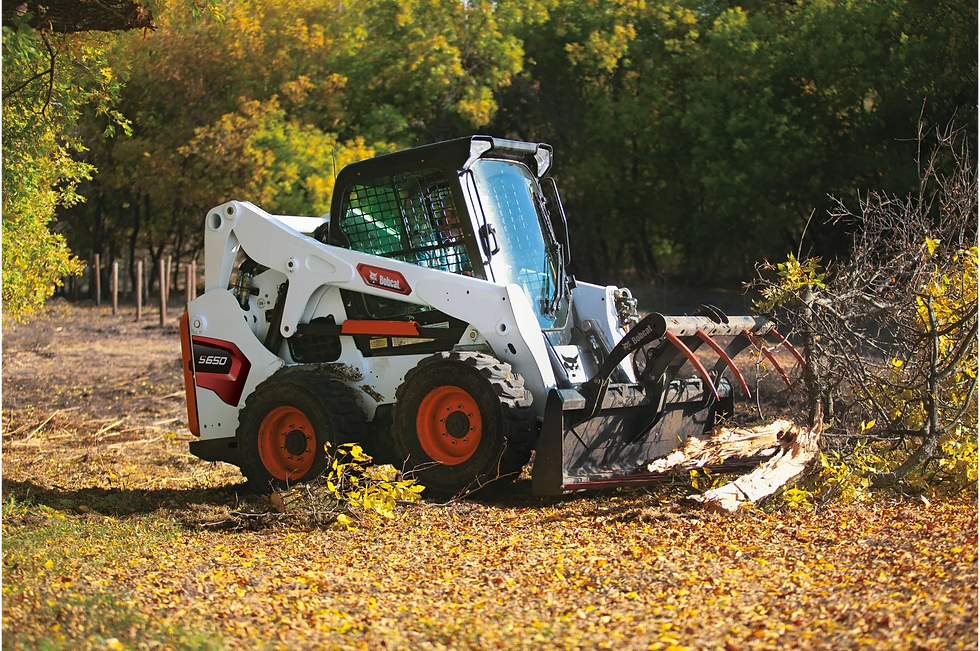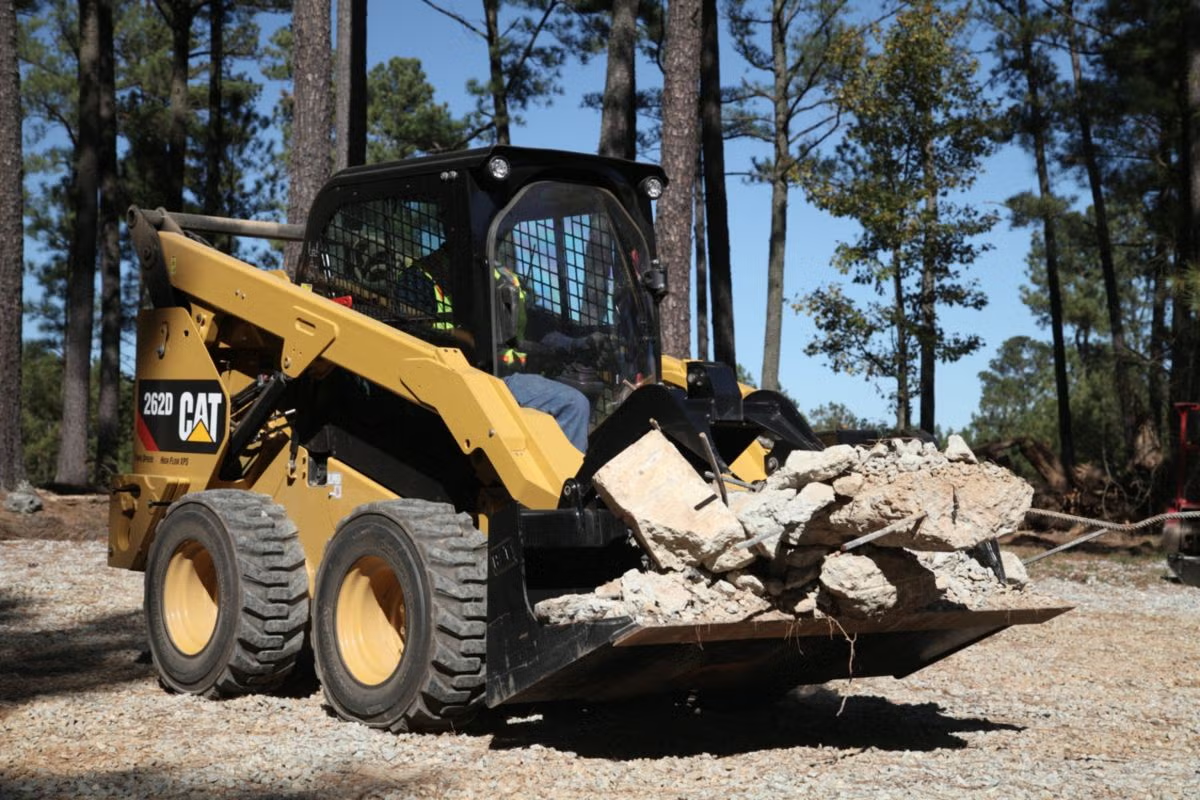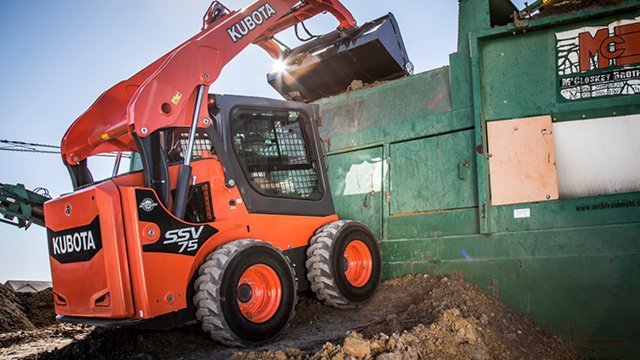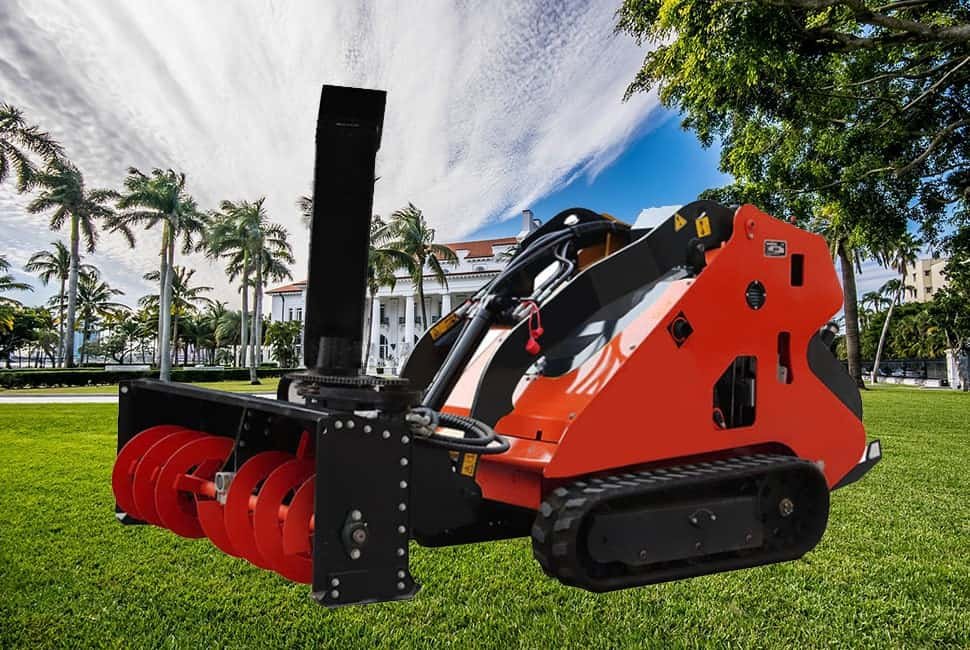Many construction projects demand high power and efficiency, but selecting the right skid steer can be challenging. Discover how a high flow skid steer can drastically improve your productivity and meet heavy-duty requirements.
A high flow skid steer features a powerful hydraulic system designed to deliver more power for attachments. This machine boosts productivity, making it ideal for heavy tasks like mulching or snow removal. Here’s why it might be the best choice for your project.
Now, let’s dive into the specific features of high flow skid steers, and how they compare to standard models.
What is a High Flow Skid Steer?
A high flow skid steer is a type of skid steer loader that is equipped with a hydraulic system capable of delivering higher flow rates to operate high-demand attachments. These systems typically provide a flow rate of 30 gallons per minute (gpm) or more, compared to the 15–20 gpm found on standard models.
These machines can handle attachments like mulchers, snow blowers, and stump grinders with ease, providing more power for tasks that require significant hydraulic output. With a high flow skid steer, you can take on larger jobs in less time.
While standard skid steers are versatile for light to moderate tasks, a high flow skid steer is designed for heavier, more specialized applications. The increased hydraulic power allows the high flow model to operate large-scale attachments, reducing downtime and improving task efficiency. This makes high flow skid steers perfect for landscaping, construction, and snow removal.

Why Choose a High Flow Skid Steer Over a Standard Model?
High flow skid steers offer a range of advantages over standard models, particularly for high-demand applications. Whether you’re working with heavy equipment or dealing with tough terrain, these machines provide more power and versatility.
A high flow skid steer can handle a wider variety of attachments, making it more suitable for tasks like land clearing, snow removal, and excavation. The increased hydraulic capacity ensures smoother and faster operations, improving overall project timelines.
One of the key reasons to opt for a high flow skid steer over a standard model is its ability to run heavy-duty attachments. Attachments like mulchers, brush cutters, and large augers require more hydraulic power to function effectively. A standard skid steer would struggle with these tasks, but a high flow skid steer can power through them with ease, improving job efficiency and reducing operational costs.
What Are the Advantages of High Flow Skid Steers in Construction?
High flow skid steers are particularly useful in construction due to their powerful hydraulic systems. They allow construction workers to complete tough jobs faster and more efficiently, saving both time and money.

In construction, time is money, and high flow skid steers help reduce the time spent on tasks such as excavation, material handling, and site preparation. Their ability to handle more demanding attachments makes them an invaluable tool on the job site.
Construction projects often require multiple tasks to be completed in a short amount of time. A high flow skid steer can handle attachments that speed up these processes. For example, using a high flow auger allows faster drilling for foundations or utility poles. Additionally, the power and speed of a high flow skid steer mean that workers can complete tasks more quickly, improving overall productivity on large-scale projects.
How Do High Flow Skid Steers Compare to Track Loaders?
Both high flow skid steers and track loaders are capable of handling demanding tasks, but they have distinct advantages depending on the type of work you’re doing. Let’s compare them in terms of stability, power, and attachment compatibility.
Track loaders are known for their superior stability, especially on rough or uneven terrain. However, high flow skid steers are more versatile when it comes to attachment options. Choosing between the two largely depends on the terrain and the tasks at hand.
Track loaders are particularly advantageous when operating on soft or uneven ground, thanks to their tracked undercarriage, which provides superior traction. However, high flow skid steers have a more powerful hydraulic system, which allows them to run a wider range of attachments, making them more suitable for tasks like landscaping, snow removal, or material handling in construction. If you require more flexibility and attachment variety, a high flow skid steer would be the better choice.
What Attachments Can You Use with a High Flow Skid Steer?
One of the major benefits of high flow skid steers is their ability to power a wide range of hydraulic attachments. Whether you’re working on land clearing or snow removal, the right attachment can make a world of difference.
High flow skid steers are compatible with attachments such as mulchers, snow blowers, stump grinders, and more. These tools require high hydraulic flow to operate efficiently, making high flow skid steers the ideal machine for these tasks.
High flow skid steers provide a variety of options for job site work. Attachments such as stump grinders, trencher attachments, and rotary cutters work especially well with high flow systems, as they require significant hydraulic pressure to function at their best. With these machines, you can quickly and efficiently tackle a range of tasks, from clearing brush to digging trenches, while improving overall productivity and job completion time.
What Are the Top 5 High Flow Skid Steers?
When considering a high flow skid steer, several models stand out for their exceptional performance, hydraulic power, and ability to handle demanding attachments. Here are five top options for those looking to maximize their machine’s capabilities.
When it comes to hydraulic power, versatility, and performance in demanding tasks, the following telehandler models stand out as top choices in the industry. Here’s a detailed look at each:
- Bobcat S650
Renowned for its impressive hydraulic capabilities, the Bobcat S650 delivers a high hydraulic flow of up to 35.6 gallons per minute (gpm). This makes it an excellent choice for demanding attachments, ensuring both powerful performance and efficient operation. Whether you’re working with heavy-duty tools or precision equipment, the S650 provides the necessary power to get the job done efficiently.
- Case 570N XT
The Case 570N XT is designed for large-scale construction and landscaping projects, thanks to its robust hydraulic flow of 37.5 gpm. This model is built to handle heavy loads and demanding tasks, making it a reliable choice for contractors who need consistent performance in challenging environments. Its high-flow system ensures that even the most demanding attachments operate smoothly and efficiently.
- Caterpillar 262D
The Caterpillar 262D is a versatile machine with a high-flow hydraulic system rated at 34.3 gpm. It offers excellent stability and performance across a wide range of tasks, making it a go-to choice for diverse construction needs. Whether you’re lifting heavy materials or working on uneven terrain, the 262D provides the power and reliability you need.
- New Holland L230
With a high-flow capacity of 37.3 gpm, the New Holland L230 is designed for heavy-duty applications such as forestry, land-clearing, and large-scale construction. Its powerful hydraulic system ensures that it can handle the most demanding tasks with ease, making it an ideal choice for projects that require both strength and efficiency.

- Kubota SSV75
The Kubota SSV75 features a hydraulic system with a flow rate of 35.5 gpm, providing ample power for heavy-duty attachments and operations. This model is known for its reliability and versatility, making it suitable for a variety of tasks, from construction to agricultural applications. Its robust hydraulic capabilities ensure that it can handle demanding workloads without compromising performance.
Each of these models offers unique benefits tailored to different tasks, from landscaping and agricultural work to heavy construction projects. When choosing the right telehandler for your needs, consider the specific requirements of your project, including the type of attachments you’ll be using and the working conditions. By selecting a model that aligns with your project’s demands, you can ensure optimal performance and efficiency on the job site.
How to Choose the Right High Flow Skid Steer for Your Needs?
Choosing the right high flow skid steer can be a challenge, especially with the variety of models available. Consider factors such as hydraulic flow rate, weight, and the attachments you plan to use when making your decision.
A key consideration when selecting a high flow skid steer is ensuring that the machine’s flow rate matches the requirements of your attachments. Additionally, factors like machine size and weight should also be factored into your decision.
Different tasks may require different specifications. For instance, if you’re using heavy-duty equipment like a stump grinder, look for a machine with a higher flow rate. Likewise, consider the size of the skid steer and whether it fits within the space or terrain of your worksite. Some tasks might require more lifting capacity, while others may demand enhanced hydraulic capabilities.
Résumé
High-flow skid steers are designed to deliver exceptional hydraulic power, making them perfectly suited for heavy-duty tasks in construction, landscaping, and snow removal. Their powerful hydraulic systems provide the strength and efficiency needed to handle demanding jobs, ultimately helping you get more done in less time while reducing operational costs.


